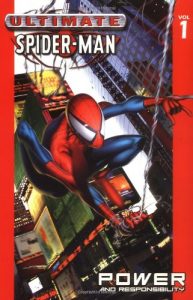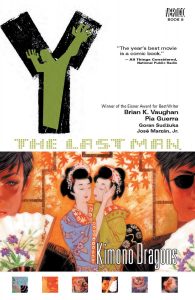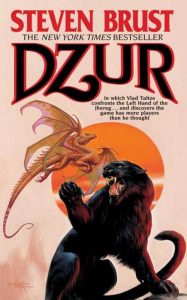I mean, it’s Indiana Jones, right? Star Wars was basically imprinted upon my brain from my earliest memories, and the consecutive releases of The Empire Strikes Back and Raiders of the Lost Ark cemented Harrison Ford as the coolest guy on the planet. What I’m saying is, objectivity is basically impossible. Despite this, Indiana Jones and the Kingdom of the Crystal Skull came out last week, and now I’m forced to try for objectivity anyway. Thanks a lot, Harrison Ford! (And George Lucas and Steven Spielberg!) Which may explain my review delay of almost a full week past having seen it in a midnight premiere showing, although my inclination is to blame my recent vacation instead.
So, it’s been twenty years since Indy was last thwarting supernatural Nazi plots and freeing slave kids and otherwise trotting the globe in pursuit of archaeological treasures. Well, no, since we’ve last seen him doing such things. It’s clear almost immediately that he hasn’t stopped doing them. The only real difference is that 1957 leaves him with slightly tireder muscles at the end of a long day’s adventure and that the jackbooted enemies have a different ideology. The graverobbery and the cool whip use and Indy’s instinctive understanding of and respect for history (both the commonplace and the paranormal), in stark contrast to everyone around him? All of that is the same. And when push comes to shove, that’s what I’m looking for in an Indy (not indie) flick. It can have goofy dialogue and it can have some of the worst effects I’ve ever seen come out of ILM and it can have slightly more pointless moments designed to make the children in the audience giggle than in previous Indiana Jones films. And I’m not saying I’ll like those things; but since it still feels like swashbuckling archaeology, since the core appeal of the film is still there, I’ll accept them.
The real problem I have is knowing that I went into the theater with extremely low expectations, and came out pleasantly surprised. It was about on par with Indiana Jones and the Temple of Doom, which is a low bar for Indy, but still pretty great overall. And now I have to think to myself, what if someone reads this and goes into the movie with higher, dashable expectations? That’s a tough responsibility to shoulder. So, if you want to avoid it because it’ll be crap, you shouldn’t, because it isn’t. But you should also bear in mind some terrible effects[1], cheesy dialogue[2], and a hilariously bad refrigerator sequence are there to temper you back down to thinking it will be bad anyway, so you can still like it. It’s a tightrope, I know.
Final thought, to the lady who was sitting next to me in the airport on Tuesday morning: look, I understand that some people have a hard time with science fiction being inserted into anything in the universe world. I can accept that you walked into the theater not expecting [spoilers]. But I also know this is not your first experience in the life of Doctor Jones. The first time you watched one of his movies, the climactic scene showed a lot of Nazis having their faces melted off of their skulls because they had the temerity to open God’s toybox. The second time, some dude pulled some other dude’s heart out of his chest, without breaking the skin. It might be worth your time to admit to yourself that your complaint isn’t really so much about the [spoilers] as it is about your decision to get rid of your imagination sometime in the last 25 years, and now you resent anyone around you who still has one, because they look like they’re having more fun. Just think about it, is all I’m saying.
[1] It’s not just the prairie dogs.[3] There was a punching battle on a couple of side-by-side jeeps that was as obviously green-screened as anything I’ve seen in the past several years in a Sci-Fi Channel original motion picture.
[2] For my part, I really didn’t mind, and was even amused. But it seems a little incestuous to have Indiana Jones “have a bad feeling about this”. I’m pretty sure I should have minded, y’know?
[3] Although it’s possible I’m wrong, I just kind of assume everyone already knows about the prairie dogs, even if they know nothing else. It’s like they were inserted just to remind everyone that George Lucas still had some creative control?
 A thing that is rapidly striking me as odd about the Ultimate Marvel universe is how unrelated the stories are, compared to 1960s Marvel. I mean, I’ve read three origin stories now, and all of them refer to events that are mutually exclusive of each other. As though they’re all actually set in mildly disparate realities from one another. This is not something that troubles me particularly, just an oddity. I mention it in part because it struck me last time and I never said, but also because it’s one of the many aspects informing my reading of
A thing that is rapidly striking me as odd about the Ultimate Marvel universe is how unrelated the stories are, compared to 1960s Marvel. I mean, I’ve read three origin stories now, and all of them refer to events that are mutually exclusive of each other. As though they’re all actually set in mildly disparate realities from one another. This is not something that troubles me particularly, just an oddity. I mention it in part because it struck me last time and I never said, but also because it’s one of the many aspects informing my reading of  For the first time in a really long span, I’ve broken the rotation of my graphic novels reading. It’s very much not my fault, though. See, the current Walking Dead book was supposed to have been out in January, and then April, and now in a few days. But “in a few days” pushes well beyond the time I was supposed to read another one, you see. So I had to skip ahead to the nearly concluded Y series. Well, okay, not very near, since I’ve got two books to go after this one, and one of those doesn’t release until June. But it feels pretty near, right now.
For the first time in a really long span, I’ve broken the rotation of my graphic novels reading. It’s very much not my fault, though. See, the current Walking Dead book was supposed to have been out in January, and then April, and now in a few days. But “in a few days” pushes well beyond the time I was supposed to read another one, you see. So I had to skip ahead to the nearly concluded Y series. Well, okay, not very near, since I’ve got two books to go after this one, and one of those doesn’t release until June. But it feels pretty near, right now. I’m not sure if it’s literally true, but WordPress claims that this is my 400th post here. That’s a nice round number, and for people who care about such things it is fitting that said post be dedicated to one of my favorite authors having written a new book in one of my favorite series. Sure, he wrote it a goodly while ago, and sure, I’ve never reviewed any of the other books in the series (besides a highly allegorical one set in the same world but otherwise wholly unrelated, at least that I’ve been able to detect via my apparently useless English Lit degree), but regardless of all that,
I’m not sure if it’s literally true, but WordPress claims that this is my 400th post here. That’s a nice round number, and for people who care about such things it is fitting that said post be dedicated to one of my favorite authors having written a new book in one of my favorite series. Sure, he wrote it a goodly while ago, and sure, I’ve never reviewed any of the other books in the series (besides a highly allegorical one set in the same world but otherwise wholly unrelated, at least that I’ve been able to detect via my apparently useless English Lit degree), but regardless of all that,